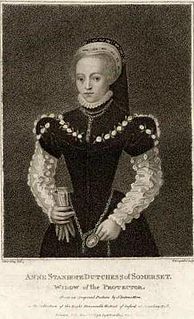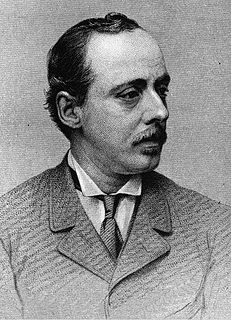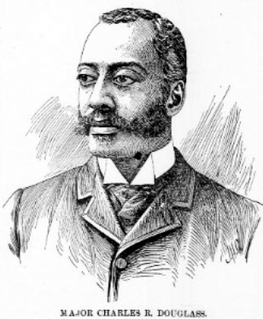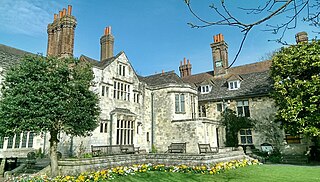
George Quayle Cannon was an early member of the Quorum of the Twelve Apostles of The Church of Jesus Christ of Latter-day Saints, and served in the First Presidency under four successive presidents of the church: Brigham Young, John Taylor, Wilford Woodruff, and Lorenzo Snow. He was the church's chief political strategist, and was dubbed "the Mormon premier" and "the Mormon Richelieu" by the press. He was also a five-time Territorial Delegate to the US Congress.

Martha Jefferson "Patsy" Randolph was the eldest daughter of Thomas Jefferson, the third President of the United States, and his wife Martha Wayles Skelton Jefferson. She was born at Monticello, near Charlottesville, Virginia.

Anne Seymour, Duchess of Somerset was the second wife of Edward Seymour, 1st Duke of Somerset (c.1500–1552), who held the office of Lord Protector during the first part of the reign of their nephew King Edward VI. The Duchess was briefly the most powerful woman in England. During her husband's regency she unsuccessfully claimed precedence over the queen dowager, Catherine Parr.

George Charles Spencer-Churchill, 8th Duke of Marlborough, DL, styled Earl of Sunderland until 1857 and Marquess of Blandford between 1857 and 1883, was a British peer.
James Hannell was an auctioneer, publican, and Australian politician elected as a member of the New South Wales Legislative Assembly, the first Mayor of Newcastle, and the first Mayor of Wickham.
There have been four Abdy baronetcies:

Joseph Young was an early convert to the Latter Day Saint movement and was a missionary and longtime general authority of The Church of Jesus Christ of Latter-day Saints. He was an elder brother of Brigham Young.

The family of Sigmund Freud, the pioneer of psychoanalysis, lived in Austria and Germany until the 1930s before emigrating to England, Canada and the United States. Several of Freud's descendants have become well known in different fields.
Joseph James Moir (1809–1874) was a prominent builder, ironmonger, citizen and shot manufacturer in 19th century Tasmania. He is best known for building the Taroona Shot Tower, but also built St Mark's Anglican Church, Pontville, issued tokens in his own name during a currency shortage in the colony, and served as an alderman on Hobart City Council.
John Edmund Bentley was an English sportsman who played in the first international rugby football match in 1871, representing England as a halfback.

Helen Anne Park, known as Ann Park or Anna Park, was baptised on 16 December 1770 in Edinburgh, Scotland. She was the daughter of Joseph Park, an Edinburgh coachmaker and Jean Dick. The record of Ann's baptism gives her mother's name as Ann Dick, but the parents marriage record states her name to be Jean Dick. The records of all of Ann's subsequent siblings also give their mother's name as Jean Dick. Ann married John Greenshiels, or Greenshields, on 11 November 1794 in Edinburgh, Scotland. She bore the poet Robert Burns an illegitimate child named Elizabeth "Betty" Burns. Her name is given as 'Ann Hislop' on her daughter's death certificate of 13 June 1873.
This Fry family was prominent in England, especially Bristol, in the Society of Friends, and in the confectionery business in the 18th, 19th, and early 20th centuries. They intermarried with many of the other prominent Quaker families and were involved in business and social and philanthropic causes. Although at their peak during the 19th century, the Fry family are still a very active family within England, specifically in Somerset.

John Ellis generally known as "Captain Ellis", was a pastoralist and businessman prominent in the early days of South Australia.
Samuel Moss Solomon was an early Jewish settler in Australia, amongst whose descendants many achieved a degree of notability. The relationship between these descendants is complicated by three factors: the duplication of names, not only within a family line but across lines; the number of intra-family marriages; and marriages to people with the same surname but not closely related. This list is not exhaustive but includes most family members likely to be found in Wikipedia and Australian newspapers.

Charles Remond Douglass is the third and youngest son of Frederick Douglass and his first wife Anna Murray Douglass. He was the first African-American man to enlist in the military in New York during the Civil War, and served as one of the first African-American clerks in the Freedmen's Bureau in Washington, DC.

Southover Grange in Lewes, Sussex is a house of historical significance and is Grade II* listed on the English Heritage Register. It was built in 1572 by William Newton and owned by this family for the next three hundred years. After this it was the residence of many notable people until it was bought by the local Council in about 1945. Today it is owned by the East Sussex County Council. It is Lewes Register Office which provides Marriage Ceremony Packages.

Nibley House, North Nibley in Gloucestershire is a house of historical significance and is Grade II* listed on the English Heritage Register. The Neoclassical Georgian facade dates from 1763 behind which lies the Jacobean manor house built in 1609 by John Smythe the Elder, Steward at the time to Lord Berkeley. It was the home of many notable people over the next four centuries. Today it is still a private residence which provides bed and breakfast and camping accommodation and is also a wedding venue.

Benjamin Payler, , and is described as a sculptor, stone and marble mason. He was apprenticed to Catherine Mawer, alongside fellow apprentices Matthew Taylor and Catherine's son Charles Mawer. He formed a business partnership at 50 Great George Street with Charles Mawer in 1881. There is no known record of Charles after that. Payler continued to run the business there under his own name. In his day, he was noted for his 1871 bust of Henry Richardson, the first Mayor of Barnsley, his keystone heads on the 1874 Queen's Hotel in the same town, and his architectural sculpture on George Corson's 1881 School Board offices, Leeds.
Thomas Barker Mellor was a photographer and organist who worked in Derbyshire from around the mid 1860s to 1913.












